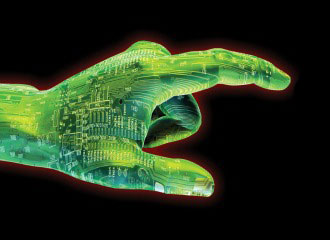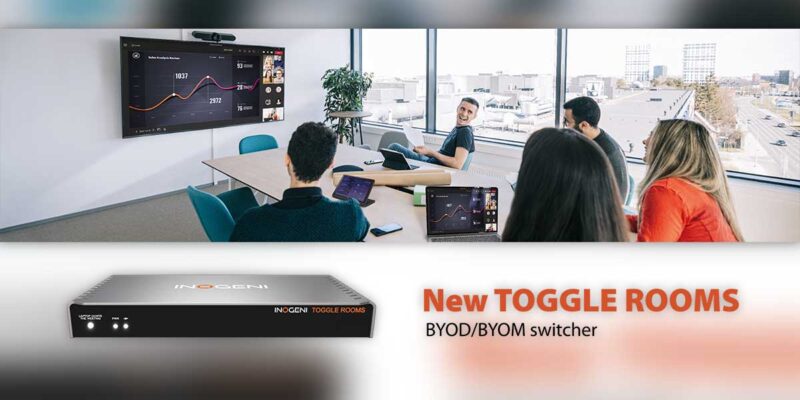How Technology Is Taking Retail Back to the Future
By Bill Bishop
Chief Architect, BrickMeetsClicks.com
 Stuart Armstrong was pushing the boundaries of using POS data at IRI to understand shopping behavior when I first met him. Today he’s pushing the boundaries of using digital screens to communicate with shoppers inside stores at ComQi.* In between, he developed multi-channel marketing strategies for the consumer goods and retail industries.
Stuart Armstrong was pushing the boundaries of using POS data at IRI to understand shopping behavior when I first met him. Today he’s pushing the boundaries of using digital screens to communicate with shoppers inside stores at ComQi.* In between, he developed multi-channel marketing strategies for the consumer goods and retail industries.
I think he has important things to say about where we’re going with the technology-enhanced shopping experience, which changes in the retail environment are most transformative and how retailers and brands are using interactive screens to build customer relationships.
You’ve spent a long time at the intersection of retail and communications media. How would you describe where we are today?
A lot of the things we’re doing today with omni-channel, big data, technology, millions of dollars and many hours are taking us back to the future — back to something retailers used to know how to do very well. It’s taking us back to the intimacy of customer service that retailers used to offer.
Back in the day, Sam the grocer might stand on the sidewalk beside his nice-looking produce. When Mrs. Smith walked by with little Patty, he knew what she’d bought, what she liked and disliked, and even that what flavor of penny candy her daughter preferred. It was a great customer relationship. It was personal. He knew her needs and he met her needs. And she talked with her friends about Sam the grocer, the original social media.
Then we moved to the other end of the spectrum with individual consumers. Broadcast media came on the scene, and we went through a bubble. Brands and advertisers developed a theory of reach and frequency, and they built a whole economic structure around mass media: Bombard enough people with messages and the small percentage of individuals that responds will be enough.
Today, we’re trying to get back to the level of intimacy we used to have with individual customers. We may be using technology to get there, but in the end, retail is a high-touch story, not a high-tech story. We’re using purchase histories and data analysis to re-establish relevance and recency. The more we can relate to consumers at a specific time with relevant information, the greater share of mind we gain and the greater the opportunity to influence purchases.
Which recent developments in retail strike you as most important?
There’s been a tsunami of change in the past five years. I think these three are important to recognize.
- BYOD (bring your own device). Smartphones have spread far and wide in the last 5 years, and 40 percent of shoppers want to use their device while they are in the store — to compare prices, to scan QR codes, to look up alternatives. It’s changed the in-store experience, and now that people can shop anytime, anyplace, retailers and brands need to be present in the digital space as well.
- The endless aisle concept. Retailers are trying to do more with less — offer more variety, greater selection, better experiences, but with less square footage. This means smaller on-site inventory and fewer back shelves. The endless aisle enables retailers to say “Sure, we can get that for you” and deliver fast.
- The potential for technology and data to underpin greater levels of customer service. Frequent shopper programs have mostly delivered a sea of discounts. It degrades the brand and takes away the intimacy. There’s huge potential to use technology to improve customer service.
Powerful synergies arise from these developments. Check-in, for example, is a huge opportunity that touches on at least two of them. Say you go to the big electronics store to buy a smartphone and check in by swiping your device. And say check-in triggers the ability of the sales associate to call up your purchase history. The associate will understand your needs better, and you’re going to get much better service. Using technology and data to deliver customer service like this can bring retailers closer to the kind of relationship Sam the grocer had with his customers. Using it just to push promotions doesn’t create the same kind of intimacy or trust, and the more our customers trust us, the more information they will be willing to share.
What do these changes mean for product brands?
Brands are building stronger presence in stores using the “store within a store” concept. Fashion brands have done this for years in department stores, and CPG and cosmetics brands do it in grocery and drug stores mainly with displays, but brands are branching out into other venues now.
Remember that smartphone purchase? The last time I bought a smartphone, my sales associate walked me over to the manufacturer’s display and introduced me to Sally. “Sally will show you how to use your phone,” he said, and for the next 20 minutes Sally did exactly that. Sally works for the manufacturer, and she was servicing, not selling — but because she was servicing, she was selling. (Sometimes brands are delivering this kind of service via kiosk or screen.)
Brands used to print and send out mass mailings and figure that ½ to 1 percent of people would trip over them and buy. Now they’re starting to target stores where they have particular opportunities to grow sales and investing larger amounts of money in those locations.
You talk about the importance of screen-rich environments. What do you mean?
Screen-rich environments are playing a big part in the increasingly interactive store shopping experience.
- “Public screens” deliver one-to-many messages. You find these on the aisle, over the aisle, or even worked into the décor as part of the millwork; they don’t have to be a screen on a stick.
- “Private screens” deliver one-to-one messages and are the best vehicle for customer service. These are the mobile phone screens of individual shoppers, where they can download information and receive personalized offers, support or instruction.
Some screens can do double duty. My company recently helped roll out a digital price board in the automotive service sector that doubles as a “video on demand” screen. Remember Mrs. Smith? Imagine she comes in for an oil change and notices the price difference between synthetic and regular oil and asks about it. Her sales associate might or might not know the answer, but now he or she can use the same sign to show her a 90-second video that explains the difference. Now Mrs. Smith gets the answers she needs to make a decision from a credible source. This would be a powerful tool for many areas within grocery and drug store environments such as health/pharmacy, organics and even the wine department. By the way, it’s important to note, that supporting sales in this manner has dramatic effects in increasing sales and trading up the purchase.
Finally, screens can now interact with each other — which means that Mrs. Smith can download the video explaining the difference between synthetic and regular oil to take home and discuss with her husband, and not just in English. If the household is Hispanic why not furnish the information in Spanish? Another example of delivering better customer service that results in increased sales and shopper loyalty.
Which retailers are doing the best job with screen interactivity?
Burberry’s High Street store in London is one of the best. They’ve created an entirely new shopping environment. They can even create a rainstorm to inspire shoppers to buy a raincoat.
There’s a similarly great use of digital screens in the Victoria Secret Harold Square store in New York that includes a three-story video wall and screen synchronization following the shopper up and down the escalators. (In the interest of transparency, that’s our technology.)
What do you see on the horizon?
More wearables. Google Glass is a prototype, but heads-up display will evolve and wearables will become more common. And more augmented reality, where you can place your phone over a digital or static menu item and it will tell you about calories and nutritional value. Digital signage will serve up targeted content and mobile with will deliver a lot of the information people want without having to print it on a label or a menu or a shelf tag.
*ComQi is a global leader providing a cloud-based Shopper Engagement Technology that influences consumers at the point of decision, in-store, using all digital touch-points: digital signage, mobile, video, touch, web and social networks. ComQi’s mission is to deliver an end-to-end solution that is tailored to engage consumers by optimizing communications and marketing strategies that provide the best ROI. Learn more about them at comqi.com, follow them on Twitter and Facebook, or visit their YouTube channel.





